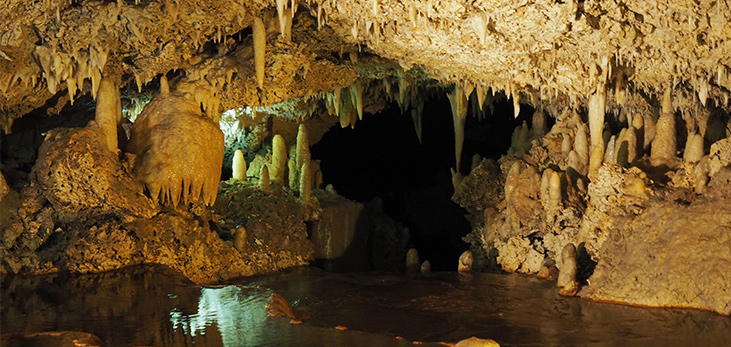|
Harrison's CaveA thing of beauty is a sight to behold. Every country around the globe has at least one natural wonder which it invites everyone to come see, enjoy and appreciate. Harrison's Cave is such a natural gem; a limestone cavern in the depths of the earth in the parish of St. Thomas on the island of Barbados. One of the most sought after sight-seeing spots on the island, it is an underground adventure. The cave is named after Thomas Harrison who owned the majority of land in the area back in the 1700s. This is the same person who established Harrison College, one of the top secondary schools in Barbados, in 1733. The caves basically remained closed to the mind and to the imagination until 1970 or so. Following a period of exploration, it was then mapped out in 1974 by an overseas engineer, who was assisted by two Barbadian young men. Thereafter, the Government of Barbados started the development of Harrison Cave with alacrity and it was first opened to the public in 1981. Within the past three (3) years, it has undergone major renovations and enhancement. There is now an exhibit point near the carpark, a Visitors' Reception Centre where entrance tickets can be purchased and persons can stroll around at leisure and view the displays. To reach the caves below, there are a few more options than in the past. There are two separate trails where persons can walk or a glass-front elevator where they can be whisked down in style. For a visit to the Cave, one is encouraged to dress comfortably and to at least wear practical shoes. The intrigue associated with Harrison's Cave is the formation of the stalactites and stalagmites throughout the cave and the natural pools and waterfalls, altogether which combine to make this a special journey below the land surface in Barbados. Stops along the tram ride allow visitors to the Cave to stretch their legs and get up close and personal with the formations, take photos and delight in the wonder of nature. Harrison's Cave is open daily from 8:45 a.m. to 3:45 p.m., with the exception of key public holidays such as Christmas, Good Friday, Easter and Kadooment.
|



